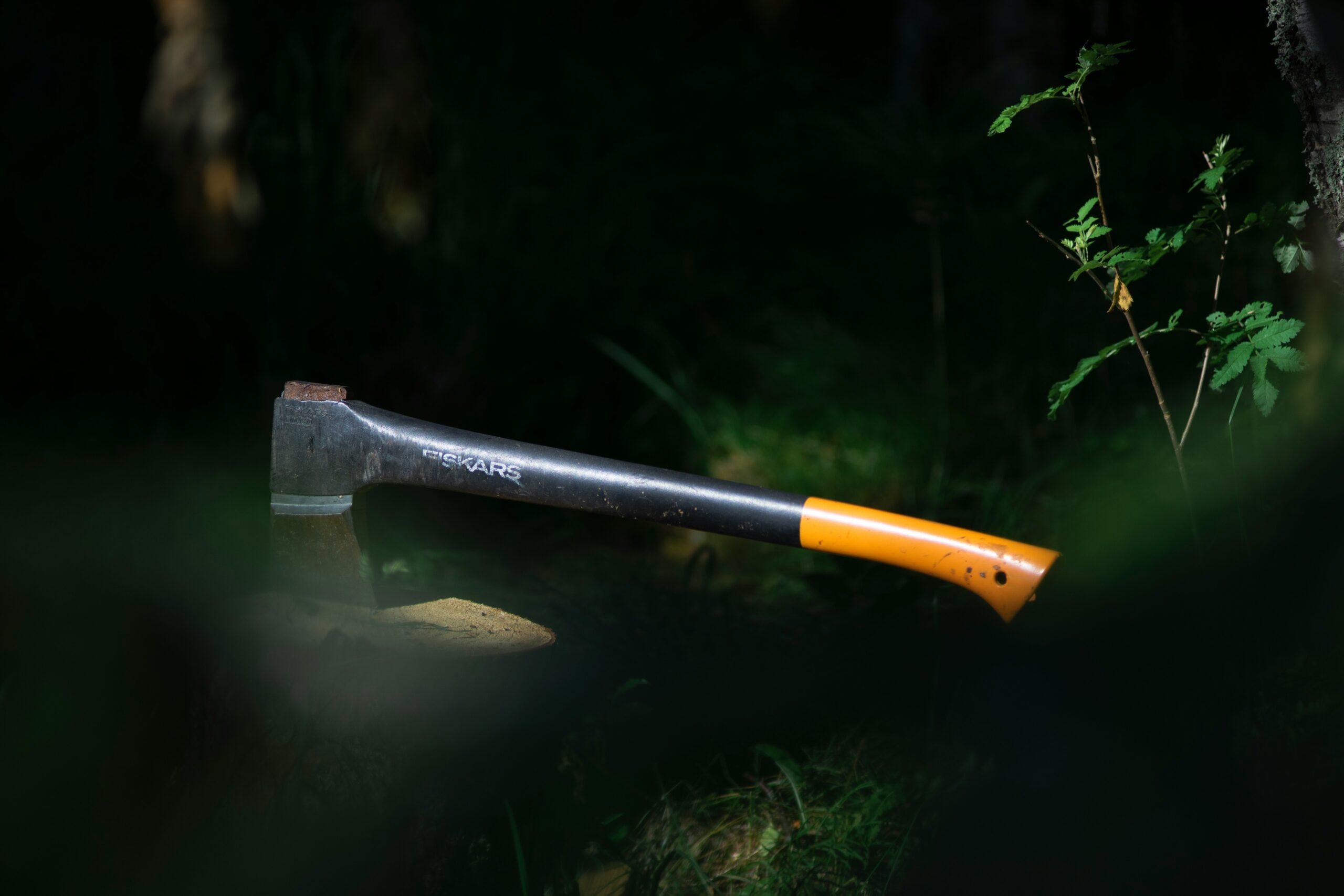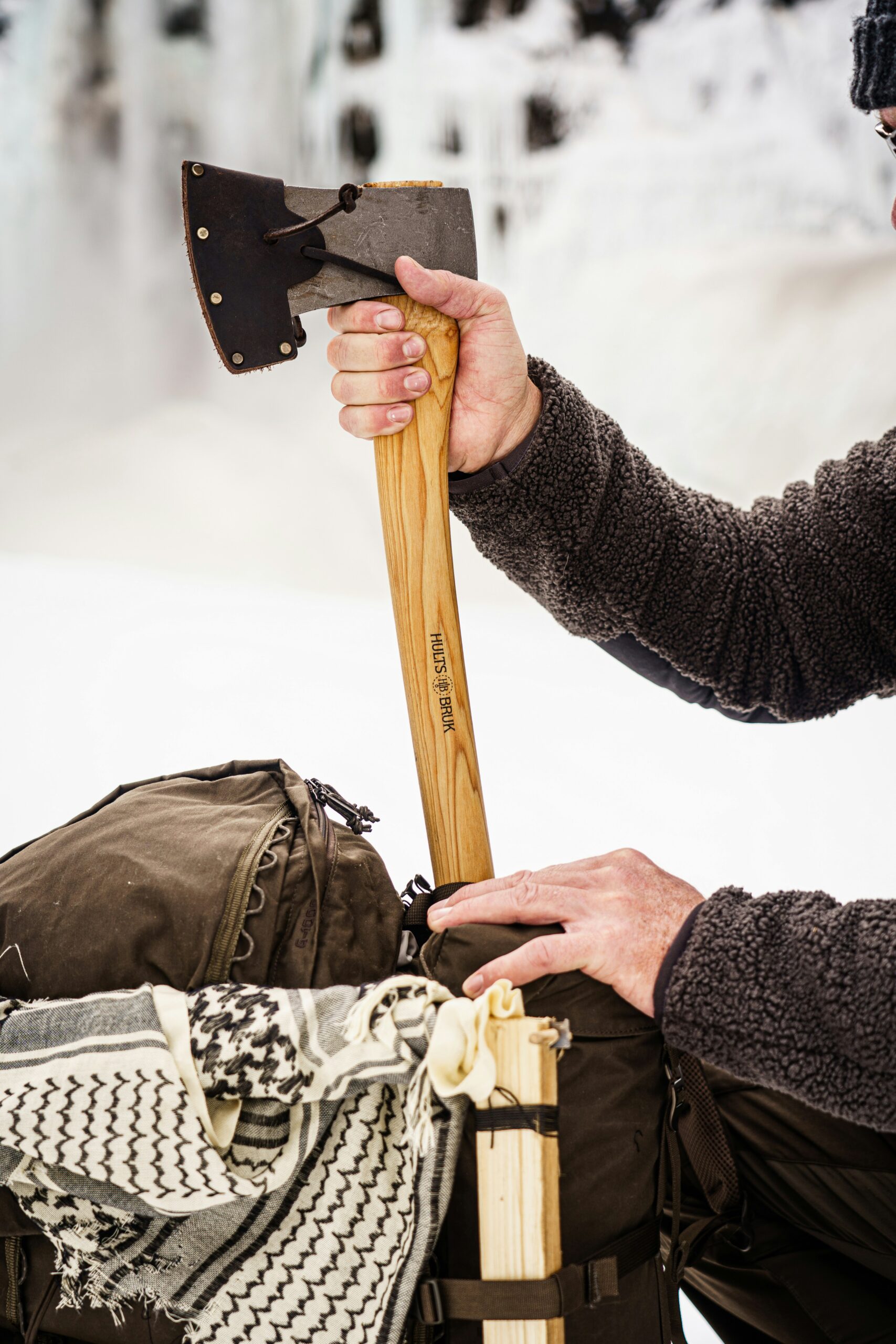Are you new to axe throwing and unsure how to hold the axe? This guide will teach you the essential grip types for beginners. You’ll learn about axe handle anatomy, two-handed and one-handed grip techniques, and the pinch grip method. Mastering these basic grips will improve your accuracy and consistency, setting a solid foundation for your axe-throwing journey. Let’s dive into the world of axe-throwing grips to help you throw like a pro.
Key Takeaways
- Proper grip is crucial for accuracy, control, and safety in axe throwing
- Understanding axe handle anatomy helps beginners choose the right axe and develop effective techniques
- The two-handed grip is essential for beginners to master before progressing to advanced techniques
- One-handed and pinch grips offer more control and versatility for experienced throwers
- Regular practice and adapting grips to different axe types help develop consistency and improve performance
Introduction to Axe Throwing Grips

Proper grip is crucial for beginners in axe throwing. It affects both accuracy and safety. A good grip helps throwers control the axe’s trajectory and reduces the risk of accidents. Understanding different grip types allows new throwers to find what works best for them, improving their performance and enjoyment of the sport.
Importance of Proper Grip for Beginners
A proper grip is essential for beginners in axe throwing as it forms the foundation for accuracy, control, and safety. By mastering the correct grip techniques, new throwers can improve their aim, reduce the risk of injuries, and build confidence in their skills. Learning the right grip also helps beginners understand the mechanics of the throw, setting them up for success as they progress in the sport.
How Grip Affects Accuracy and Safety
Grip directly impacts accuracy and safety in axe throwing. A proper grip allows throwers to control the axe’s rotation and trajectory, leading to more accurate throws. It also reduces the risk of the axe slipping or misfiring, enhancing safety for the thrower and bystanders. Beginners who master correct grip techniques can quickly improve their throwing consistency and overall performance:
- Better control of axe rotation
- Improved throw accuracy
- Reduced risk of accidents
- Enhanced throwing consistency
- Faster skill development
Understanding Axe Handle Anatomy

Understanding axe handle anatomy is crucial for mastering grip techniques in axe throwing. This section explores different types of axe handles and how their design influences grip. Knowing these elements helps beginners choose the right axe and develop effective throwing techniques.
Different Types of Axe Handles
Axe handles come in various types, each affecting grip and throw dynamics. Common handle materials include wood, fiberglass, and composite. Wood handles offer a traditional feel and shock absorption, while fiberglass and composite handles provide durability and consistent weight. Handle length and shape also vary, with straight handles offering versatility and curved handles providing better control for some throwers.
How Handle Design Influences Grip Techniques
The handle design is crucial in how throwers grip and control the axe. The handle’s shape, thickness, and texture affect hand placement and grip security. For example, handles with a slight taper towards the head allow for a more natural grip, while textured surfaces provide better traction. The material of the handle also influences grip technique, with wood offering a traditional feel and synthetic materials providing consistent performance in various weather conditions:
The Basic Two-Handed Grip Technique

The basic two-handed grip is essential for beginners in axe throwing. This section provides a step-by-step guide to mastering the technique, avoiding common mistakes, and stabilizing throws. By focusing on these key aspects, new throwers can quickly improve their accuracy and consistency.
Step-by-Step Guide to the Two-Handed Grip
To master the two-handed grip, beginners should follow these steps: Stand with feet shoulder-width apart, facing the target. Hold the axe at waist level, the dominant hand near the axe head, and the non-dominant hand at the base of the handle. Keep arms straight and elbows slightly bent. Grip the handle firmly but not too tightly. Practice this stance and grip before attempting throws:
Common Mistakes to Avoid With Two-Handed Grip
Beginners often make several mistakes when using the two-handed grip. They may grip the axe too tightly, causing tension and reduced control. Some stand too far from or too close to the target, affecting their throw. Others fail to maintain a consistent grip throughout the throwing motion, leading to inaccurate throws. Avoiding these common errors helps new throwers improve their technique and accuracy.
Tips for Stabilizing Your Throw
To stabilize throws with the two-handed grip, beginners should maintain a consistent stance and grip throughout the throwing motion. They should keep their arms relaxed and use a smooth, fluid motion when throwing. Practicing proper follow-through helps improve accuracy and consistency. Here are key tips for stabilizing throws:
- Maintain a balanced stance
- Keep a consistent grip pressure
- Use a smooth, controlled motion
- Focus on proper follow-through
- Practice regularly to build muscle memory
Mastering the One-Handed Grip

The one-handed grip is an advanced technique in axe throwing. This section covers when to use this grip, proper hand placement, and tips for enhancing control. Mastering the one-handed grip allows throwers to increase their versatility and tackle more challenging throws. Understanding these aspects helps beginners progress in their axe-throwing skills.
When to Use the One-Handed Grip
The one-handed grip becomes useful as throwers gain more experience and confidence in axe throwing. It allows for greater flexibility and control, especially when attempting trick shots or competing at higher levels. Throwers typically transition to this grip after mastering the two-handed technique and when they need to increase their throwing speed or adapt to different axe weights.
Proper Hand Placement and Alignment
Proper hand placement and alignment are crucial for the one-handed grip in axe throwing. Throwers should hold the axe near the end of the handle with their dominant hand, fingers wrapped securely around the grip. The thumb should rest along the side of the handle, providing additional control. Alignment is key; the axe head should align with the forearm, creating a straight line from the elbow to the axe head. This alignment helps maintain accuracy and power during the throw.
Enhancing Control With One-Handed Throws
Enhancing control with one-handed throws requires practice and attention to technique. Throwers should maintain a consistent release point and follow through to improve accuracy. Developing wrist strength and flexibility helps control the axe’s rotation. To enhance control, throwers can practice these key elements:
- Consistent grip pressure
- Smooth release emotion
- Proper follow-through
- Wrist strength exercises
- Target practice at various distances
Exploring the Pinch Grip Method

The pinch grip method offers axe throwers a unique technique for enhanced control and accuracy. This section explores how to execute the pinch grip, its benefits for precision throwing, and safe practice methods. Understanding this advanced grip technique allows beginners to expand their skills and improve their overall throwing performance.
How to Execute the Pinch Grip
To execute the pinch grip, throwers hold the axe near the head with their thumb and index finger. They position their hand close to the axe blade, pinching the handle between these two fingers. This grip requires a delicate balance of pressure to maintain control without restricting the axe’s natural rotation during the throw. Throwers should practice this grip cautiously, starting with lighter axes and slower throws to build confidence and skill.
Benefits of the Pinch Grip for Precision
The pinch grip offers several benefits for precision in axe throwing. It gives throwers more direct control over the axe’s rotation and trajectory, increasing accuracy. This grip technique also enables finer adjustments to the throw, making compensating for wind or other environmental factors easier. Experienced throwers often use the pinch grip for challenging targets or competitive events where precision is crucial.
Practicing the Pinch Grip Safely
Practicing the pinch grip safely requires careful attention to technique and gradual progression. Beginners should start with lightweight axes and practice at close range to build confidence and control. Maintaining proper form and always being aware of your surroundings when using this grip is essential. As skills improve, throwers can gradually increase distance and axe weight:
Choosing the Right Grip for Your Style

Selecting the right grip in axe throwing depends on personal comfort, axe type, and practice. This section explores assessing individual preferences, adapting grips for different axes, and developing consistency through regular practice. Understanding these factors helps beginners find their optimal throwing technique and improve their performance.
Assessing Personal Comfort and Preference
Assessing personal comfort and preference is crucial for beginners in axe throwing. Throwers should experiment with different grip types to find what feels most natural and comfortable. They can start by practicing each grip style and noting which one provides the best control and accuracy. Personal factors like hand size, strength, and throwing style influence grip choice, so it’s important to consider these when selecting a technique.
Adapting Grips for Different Axe Types
Adapting grips for different axe types is essential for optimal performance in axe throwing. Heavier axes may require a stronger two-handed grip, while lighter axes allow for more flexibility with one-handed or pinch grips. Throwers should adjust their grip based on the axe’s weight distribution, handle length, and head shape. Experimenting with various grip techniques for each axe type helps throwers find the most effective and comfortable throwing method.
Developing Consistency Through Practice
Developing consistency in axe throwing requires regular practice and attention to technique. Throwers should establish a routine, consistently repeating the same grip and throw mechanics. They can start by practicing their chosen grip for short sessions daily, gradually increasing duration and complexity. Tracking progress helps identify areas for improvement and motivates continued practice. Key elements for developing consistency include:
- Setting a regular practice schedule
- Focusing on proper form and technique
- Gradually increasing through difficulty
- Tracking progress and adjusting as needed
- Seeking feedback from experienced throwers
Conclusion
Mastering axe-throwing grip types is crucial for beginners to improve accuracy, safety, and overall performance. Understanding the anatomy of axe handles and practicing various grip techniques, from the basic two-handed grip to advanced methods like the one-handed and pinch grips, allows throwers to develop their skills and find their optimal throwing style. Regular practice, attention to proper form, and adapting grips for different axe types are key to developing consistency and precision in axe throwing. By focusing on these fundamental aspects, beginners can quickly progress in their axe-throwing journey, enhancing their enjoyment of the sport and setting a solid foundation for future skill development.

